Femtech and BEYOND. is a cross-sectional organization at Dentsu Inc. that promotes a number of initiatives based on the concept that Femtech is relevant not only to women but to society as a whole.
In this series of articles, we discuss the changing tide of Femtech and the significance of being involved in it through the initiatives of this organization, exchanging opinions with a broad range of companies and media.
In this second part of the series, we take a close look at the Fe:Project, a product development project that was created by the Femtech and BEYOND. team and Fujita Metal Mfg Co., Ltd. ("Fujita Kinzoku"), a manufacturer of iron frying pans and other products, based on the issue of iron deficiency in women.
The first product to emerge from this project, A Frying Pan for Unmotivated Days, and the second product, Miso Soup Pan to Energize Your Day, were both created through a crowdfunding effort led by Fujita Kinzoku. The number of buyers greatly exceeded the target, and the event drew a great response.
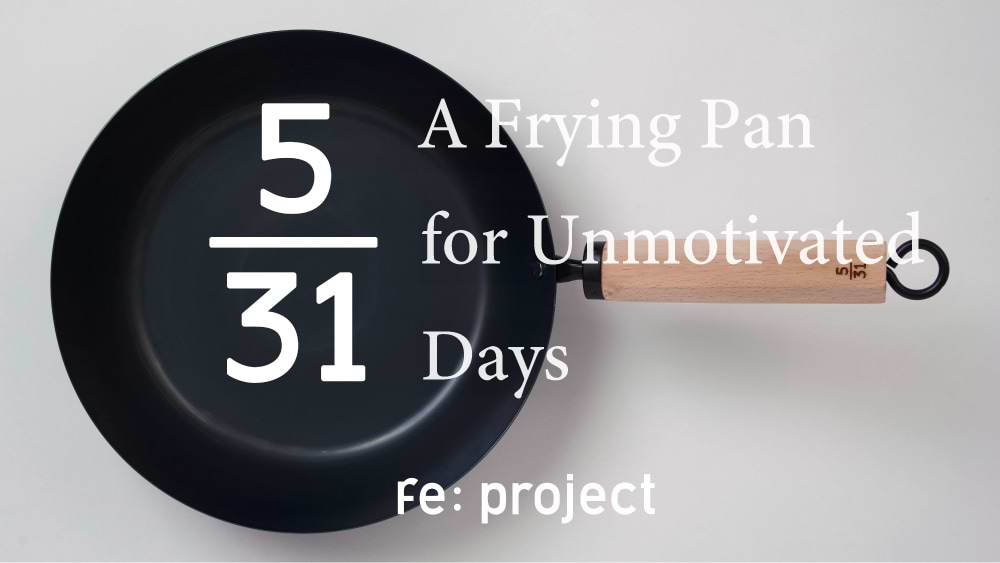
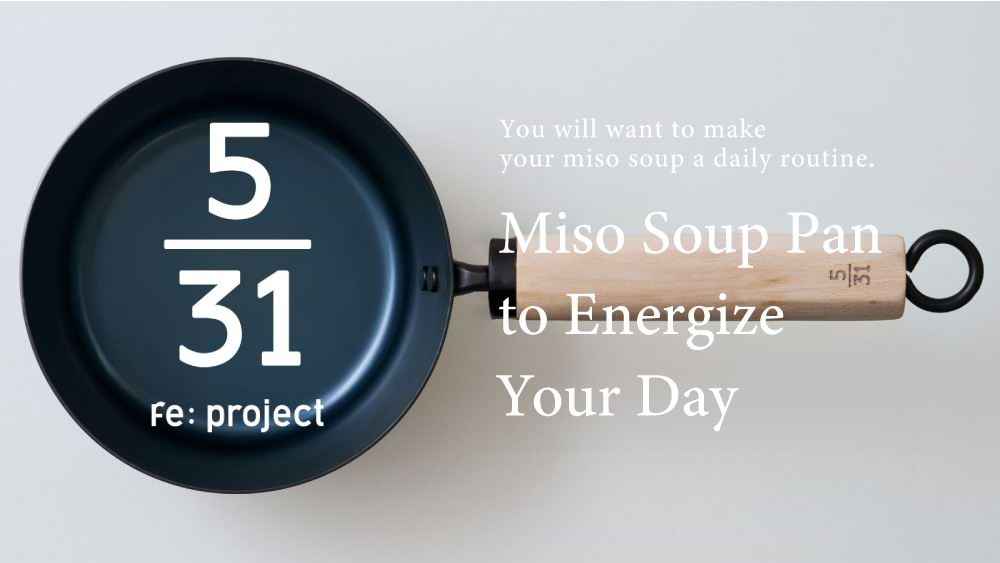
Why did they focus on iron deficiency in women and how did they come to develop the products? Seichiro Fujita, CEO of Fujita Kinzoku, who was in charge of product development, Shinya Aoyama of Dentsu Kansai, who was involved as a producer from the Femtech and BEYOND. team, and Junya Furukawa, Art Director, reflect on the origin of the idea and the background of the initiative.
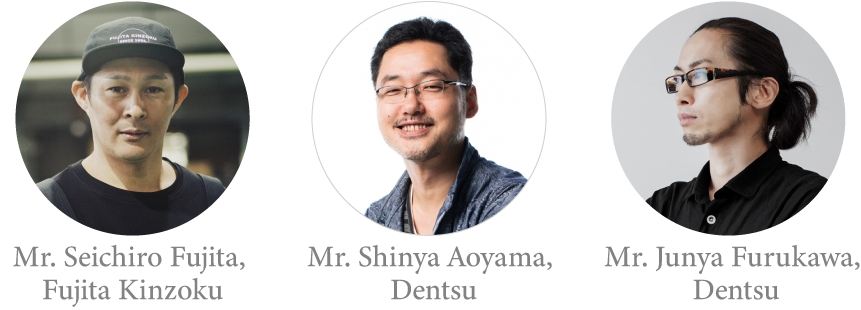
Many modern women suffer from chronic iron deficiency!?
Aoyama: The Fe:Project was born out of a conversation between the Femtech and BEYOND. team, in which one of the team members mentioned something about iron deficiency in women.
Iron is an essential nutrient for maintaining good health, but women who menstruate are more prone to chronic iron deficiency than men. Iron deficiency among women is a serious problem not only in Japan but worldwide. In other countries, measures are being taken at the national level, such as adding iron to flour and other foods. In comparison, in Japan, awareness of the problem of iron deficiency is low and there have been few initiatives to address it.
Furukawa: In particular, compared to women in the past, women today have a much different life plan. For instance, they are having fewer children, and so the number of menstrual periods over their lifetime has increased. In light of this, government announcements recommend actively taking iron during their menstrual period, but they don't really say how to take it. Women know they need it, but they don't know how to take it. That is how the discussion began, to see if we could create something that could solve this issue ourselves.
The inspiration came from tetsubin (iron kettle), a traditional Japanese craft. When water is boiled in an iron kettle, iron is dissolved, so you can take in iron by drinking hot water or tea made with this kettle. There is evidence for this. That is where we got the idea to easily consume iron on a daily basis by using iron frying pans and pots.
Aoyama: However, iron pots and pans have the image of being heavy and difficult to handle, which makes them challenging to use daily. So, we thought it would be a good idea to make iron pans and pots that are easy to clean and use. We searched for a manufacturer that could actually create such a product, and came across Fujita Kinzoku, which is located in Yao City, Osaka.
Fujita: To be honest, I was surprised when I first received your proposal. I had never even heard of Femtech until then.
Aoyama: Of course. Around 2021, when we came to you with our proposal, Femtech may have been featured in women's magazines, but I don't think it had yet become widely known in general. Given that, it’s no wonder you were taken aback when someone suddenly told you that they wanted to create pans and pots that solve women's health issues, inspired by Femtech (laughs). I remember Mr. Fujita's surprised reaction at that time very well.
Fujita: I was really surprised that the problem could be tackled in this way. In the past, iron frying pans and pots were generally described in terms of durability, while most of their appeal for cooking was based on their ability to withstand high temperatures, making it possible to fry crispy vegetables, or to make fried rice crispy. So I found it interesting because it was an idea that people in the business like us would not have thought of.
We also felt that this would be an opportunity for us to show the appeal of iron frying pans and pots to a different group of customers, so we began development without hesitation.
After repeated trial and error, we have achieved a lightweight frying pan, despite it being made of iron!
Aoyama: We thus started with the production of our first iron frying pan. Mr. Furukawa first drew a sketch that was close to the finished product, and I think this helped clarify the goal, what we want to make, among the project members.
Furukawa: In general, Femtech products tend to be designed and colored with an awareness of femininity. In this case, however, while our first priority was, of course, to have women use the product, we felt that women are not the only ones who cook. We wanted their husbands or partners to cook too. So, we aimed at creating a product that would be attractive to everyone using it, not limiting the design to women or men.
Consequently, we asked Mr. Fujita to show us various molds, and we created the product through trial and error, paying attention not only to ease of use but also to details such as the material and design of the handle.
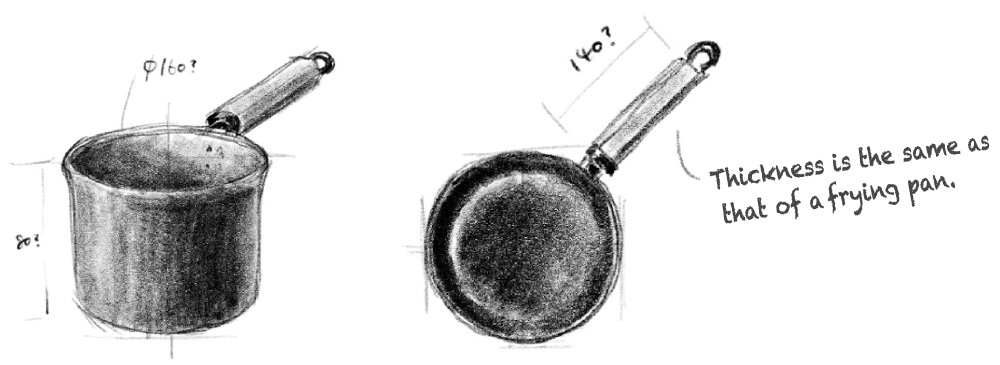
Fujita: Yes, that's right. In terms of the development part of the frying pan, the first thing we focused on was the weight. Conventional iron frying pans have the disadvantage of being heavy, so we made the iron sheet as thin as possible. However, if it is too thin, it is less durable and that can result in deformation when the pan is placed over a fire. After repeated tests, we searched for a point where we could ensure durability while making the product as thin as possible. As a result, the best thickness was determined to be 1 mm. We were able to reduce the weight to 694g, which is about the same as a typical aluminum frying pan, even though ours is made of iron. The hard-to-clean parts that you typically find in iron pans were eliminated by our original processing technology, which makes them less susceptible to rust and sticking.
Also, as Mr. Furukawa mentioned, the handles were also a special part of our product. The hexagonal shape made it more comfortable in the hand and easier to hold.
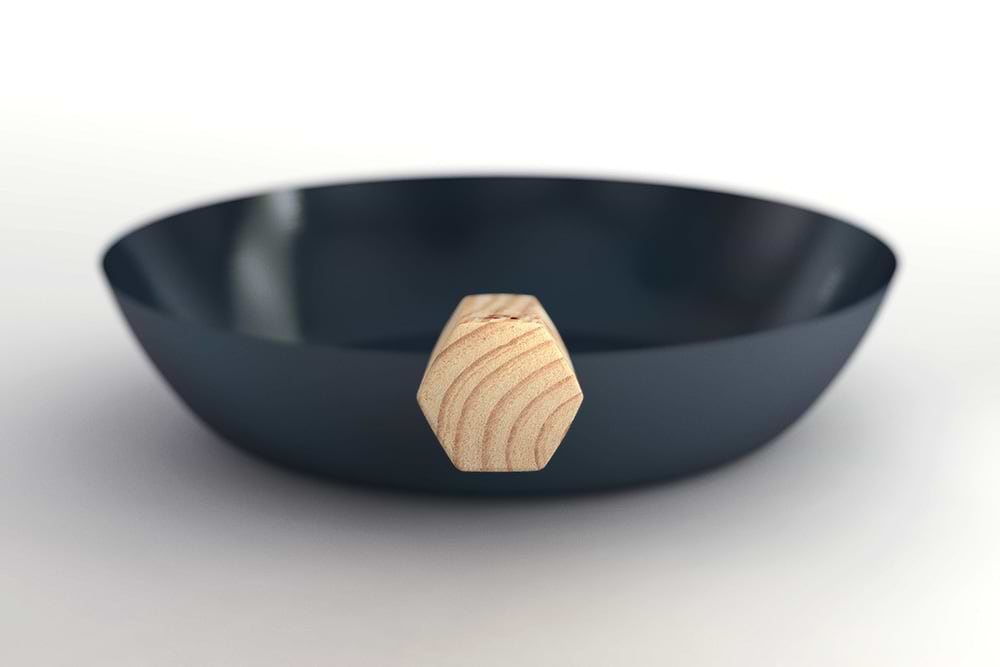
Aoyama: The copy " A Frying Pan for Unmotivated Days " was created as a phrase that embodies our thoughts on product development. This was an expression that came from a team member, and it also became the name of the product.
Furukawa: That's right. I think we were able to convey this concept in an easy-to-understand way. Even when you are tired and listless, you can easily use our iron frying pan without worrying about its weight or handling, and you can also replenish your body with iron.
The iron intake was clearly stated along with evidence, and this was met with a great response!
Furukawa: With regard to the second product, we had originally decided that after frying pans, we wanted to make pots. We wanted pots to be used on a daily basis in the same way that frying pans are, so we asked ourselves, "What is it that Japanese people eat every day?" We came up with miso soup. Our thinking was "After all, Japanese people love miso soup." This marked the beginning of the development of the miso soup pan.
Fujita: For the miso soup pan, we discussed issues such as the capacity and whether to put a spout on it.
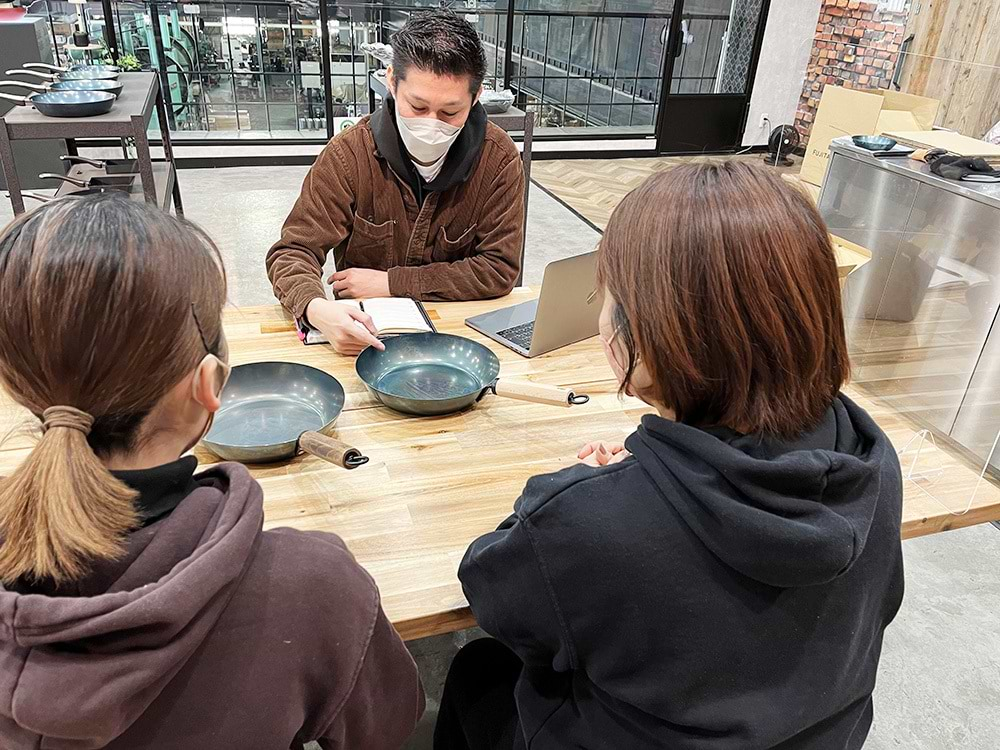
Furukawa: Yes. We decided that it needed to have enough capacity for four people to cook with their family's health in mind. We also tested whether the pots needed lids, and other aspects, including their ease of use.
Fujita: I think it was also significant that we were able to obtain solid evidence of iron intake from the second miso soup pan. A comparison of the amount of iron in a standard glass pot and a miso soup pan when miso is dissolved in hot water and heated revealed that the amount of iron in the glass pot was 1.0 mg, while in the miso soup pan it was 40 mg. The miso soup pan provides 39 mg more iron. This was a surprise to me.

Aoyama: Having a specialized research institute analyze the product and scientifically prove that it provides iron was a major boost for promotion.
For both the first frying pan and the second miso soup pan, you used Makuake, a purchase-based crowdfunding website, to attract buyers prior to starting general sales, but for the miso soup pan, the evidence you provided during promotion made a big difference in the purchase results and response.
Fujita: The first frying pan was also a success because we achieved our target. However, with the second miso soup pan, actual sales amounted to 7,340,120 JPY, which was 4,893% of our target amount of 150,000 JPY. Since the second version was in the market for longer, we need to be careful with broad comparisons, but the number of supportive buyers of the first frying pan was 104, while the number of people who bought the second miso soup pan was 1,138, a significant increase.
I think the fact that there is such a big difference has a lot to do with whether or not there is evidence.
Supporting women's daily lives with products that fit their lifestyles
Aoyama: You developed and sold Femtech products from a new angle this time. What has the response been from actual buyers?
Fujita: When I first heard about this project, I was surprised at the novel idea, but also a little skeptical (laughs). But there were actually many comments from purchasers on Makuake, such as "I have iron-deficiency anemia but iron pills didn't suit my needs, so I am glad to have a product like this," and "I am grateful that I can get iron in my daily miso soup."
Also, in June 2023, there was an exhibition called Femtech Japan, where we exhibited frying pans and miso soup pans, which were well received by female customers, many of whom bought them on the spot. We saw first-hand how many women actually suffer from iron deficiency and anemia.
In fact, looking at the customer data (second miso soup pan), more than half of customers were women in their 40s and 50s.
Aoyama: The strong response may be due in part to the fact that the word "Femtech" is gradually becoming more widely known.
Fujita: We have received a great response to both the first and second projects, and we are currently receiving calls from a number of sales outlets. Because of that, we want to continue developing the lineup following the frying pan and miso soup pan and turn them into a series in the future. I would like to further expand the possibilities of Femtech with iron products.
Additionally, we will be participating in exhibitions in Paris and Germany in January 2024. We plan to exhibit the frying pan and miso soup pan from the Fe:Project here as well, so we are looking forward to seeing the response and how they are received by people overseas.
Furukawa: I am very interested in the response overseas, where people are more aware of the problem of iron deficiency that they are in Japan.
As for the Fe:Project, we want to take on the challenge of developing various products that support women's lifestyles, such as those exclusively for boiling hot water, maintaining the concept of products that are easy to use in daily life.
